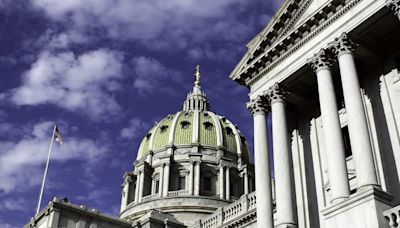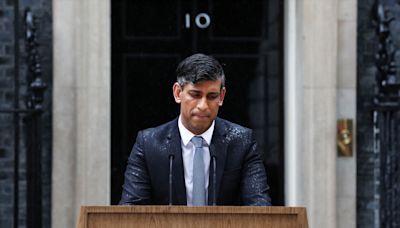Search results
The combination of lower taxes and higher defense budgets caused the national debt to balloon. By the end of Reagan’s first term it equaled 53 percent of GDP, as opposed to 33 percent in 1981. The increase was staggering, especially for an administration that had promised to curb spending.
- 1979-1980
- 1981
- 1982
- 1983
- 1984
- 1985
- 1986
- 1987
- 1988
- 1989
11/13/1979 Announcement for Presidential Candidacy07/16/1980 Ronald Reagan Wins the Presidential Nomination at the Republican National Convention, Detroit, MI10/28/1980 Reagan/Carter Presidential Debate11/04/1980 Ronald Reagan Wins the Presidential Election in a Landslide Victory (489-49 Electoral College Votes)01/20/1981 Inauguration Day01/20/1981 American Hostages in Iran Released01/22/1981 Establishment of Presidential Task Force on Regulatory Relief01/27/1981 White House Ceremony for Iran Hostages01/26/1982 First State of the Union Address - Social Programs Transferred to States02/09/1982 Indianapolis Speech, One of Several Launching New Federalism02/22/1982 Ceremony on the 250th Anniversary of the Birth of George Washington02/24/1982 Caribbean Basin Initiative (CBI) Announced at Organization of American States (OAS)01/03/1983 Commission on Strategic Forces Created01/06/1983 Surface Transportation Assistance Act Signed01/07/1983 Nuclear Waste Policy Act Signed01/11/1983 Crop Swap Program Announced in Texas01/16/1984 Address to the Nation on US/Soviet Relations01/16/1984 Grace Commission Findings on Pay Announced01/25/1984 State of Union Address - "America is Back with Four Great Goals"01/29/1984 Candidacy for Re-Election Announced01/05/1985 Nomination of Long-time Advisor and Counselor to the President Edwin Meese III to be Attorney General01/08/1985 Don Regan appointed Chief of Staff, Jim Baker III nominated as Secretary of Treasury01/20/1985 Inaugural Day - Indoor White House Ceremony01/21/1985 Public Inauguration Ceremonies at U.S. Capitol (Held Indoors Due to Extreme Cold in Washington, DC )01/01/1986 Address by President Reagan to the USSR & Address by General Secretary Mikhail Gorbachev to the USA01/07/1986 Economic Sanctions Imposed on Libya01/28/1986 Space Shuttle ChallengerExplosion02/03/1986 Commission on ChallengerDisaster Formed01/27/1987 State of the Union Address - “I’m Back”01/30/1987 Veto of Water Quality Act02/06/1987 “Up From Dependency” Welfare Initiative02/17/1987 Competitiveness Initiative Launched01/01/1988 Address by President Reagan to the USSR & Address by General Secretary Mikhail Gorbachev to the USA01/02/1988 Canada-US Free Trade Agreement Signed in Palm Springs01/25/1988 State of the Union Address - “We’re not finished yet,” Budget Process02/18/1988 Anthony Kennedy Sworn In as Supreme Court Justice01/01/1989 Address by President Reagan to the USSR & Address by General Secretary Mikhail Gorbachev to the USA01/11/1989 Farewell Address to the Nation01/20/1989 Inauguration of George H.W. Bush, President and Mrs. Reagan Return to CaliforniaPeople also ask
What did Ronald Reagan do before he became president?
What happened during Reagan's second term?
What role did Regan play in Reagan's decision-making?
Was Ronald Reagan a good president?
Feb 3, 2011 · During his second term as President, significant progress had been made toward accomplishing a genuine détente between the United States and the U.S.S.R. and ending the Cold War. At the end of his term in 1989, Reagan was credited with making a strong contribution to the level of world peace at that time.
During Reagan's second term, he sought closer relations with Soviet leader Mikhail Gorbachev, and the two leaders signed a major arms control agreement known as the INF Treaty. Historians and political scientists generally rank Reagan in the upper tier of American presidents, and consider him to be one of the most important presidents since ...
Nov 9, 2009 · During his second term, Reagan forged a diplomatic relationship with the reform-minded Mikhail Gorbachev (1931-), who became leader of the Soviet Union in 1985.
- 4 min
By Lou Cannon. Reagan came to the presidency in 1981 with a straightforward and well-articulated domestic agenda. He promised to cut taxes, curb government spending, and balance the federal budget or at least reduce the deficit. His well-crafted Inaugural Address identified the major themes the new President hoped would define his administration.
A two-term President (1981-1989), Ronald Reagan headed one of the most successful coalitions of political conservatives in American history.


